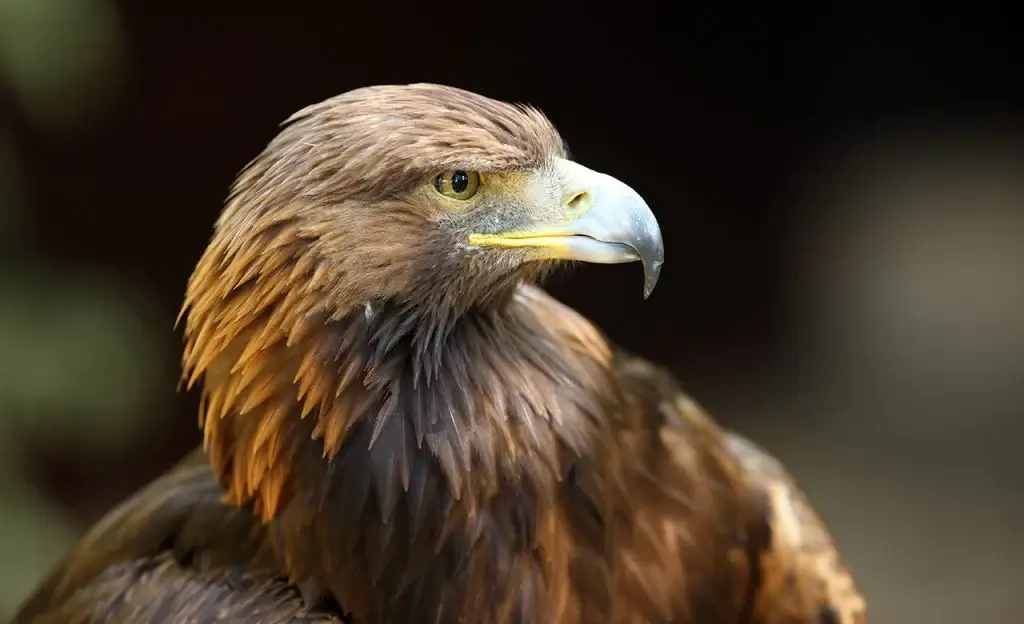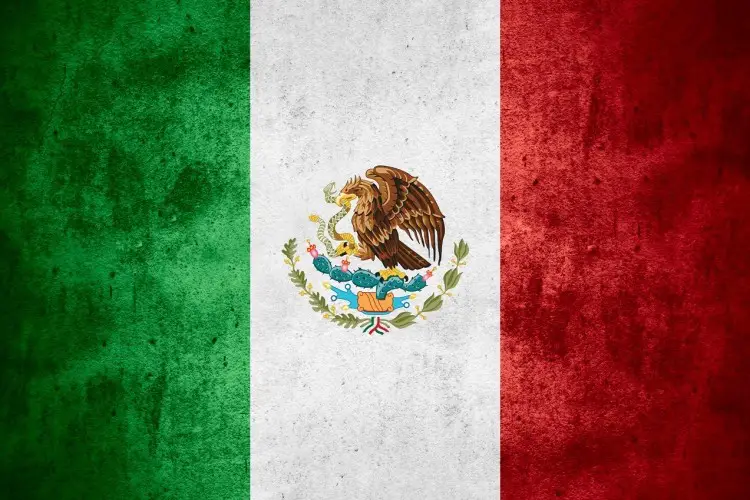The animal that represents Mexico is the golden eagle (Aquila Chrysaetos). It holds significant cultural and historical importance in Mexico. The golden eagle is the national bird and emblem of Mexico, symbolizing power, strength, and courage. It is featured prominently in Mexican art, folklore, and national symbols, including the Mexican flag and coat of arms. The bird’s majestic appearance and its association with the ancient Aztec civilization make it a revered and iconic symbol of Mexico’s heritage and national identity.
Understanding Mexico’s National Animal
Mexico’s national animal is the golden eagle (Aquila chrysaetos), a majestic bird that holds significant cultural and symbolic importance in the country. Here’s a deeper understanding of Mexico’s national animal:
- Cultural and Historical Significance: The golden eagle has deep roots in Mexican culture and history. It has been revered since ancient times, particularly during the Aztec civilization, where it held religious and symbolic significance.
- National Symbol: The golden eagle is recognized as the national bird and emblem of Mexico. It represents the values of power, strength, courage, and resilience that are associated with the Mexican people.
- National Identity: The golden eagle plays a crucial role in shaping and representing Mexico’s national identity. It embodies the nation’s natural beauty, heritage, and the interconnection between its people, land, and history.
- Representation in Symbols: The golden eagle is prominently featured in various national symbols, such as the Mexican flag and coat of arms. It can be seen perched on a cactus, gripping a snake, symbolizing the foundation of the Aztec capital, Tenochtitlan, and the triumph of good over evil.
- Cultural Depictions: The golden eagle is widely depicted in Mexican art, literature, folklore, and traditional dances. It often represents the spirit of Mexico, its indigenous heritage, and the ongoing preservation of cultural traditions.
- Conservation Efforts: The golden eagle’s status as Mexico’s national animal brings attention to the importance of conserving and protecting its natural habitat. Efforts are made to safeguard the species and promote awareness about the significance of biodiversity and environmental preservation.
Description of the Golden Eagle’s Physical Characteristics

The Golden Eagle (Aquila chrysaetos) is a large and powerful bird of prey with distinct physical characteristics. Here is a description of the Golden Eagle’s physical features:
- Size: Golden Eagles are one of the largest species of eagles in the world. On average, they measure between 27 to 33 inches (68 to 83 cm) in length, with a wingspan ranging from 6 to 7.5 feet (1.8 to 2.3 meters).
- Body Shape: They have a robust and muscular build, with broad wings and a large, hooked beak. Their body is designed for efficient flight and hunting.
- Plumage: Adult Golden Eagles have dark brown feathers covering most of their body, including the head, neck, back, and wings. The feathers on the nape of their neck are golden or reddish-brown, giving them their name. Juvenile Golden Eagles have more mottled and lighter-colored plumage.
- Head and Beak: They have a large head with a prominent beak. Their beak is hooked and sharp, designed for tearing and capturing prey.
- Eyes: Golden Eagles have large, bright, and piercing eyes. Their eyes are a distinctive yellow color and are surrounded by a protective bony ridge called an “eyebrow.”
- Legs and Talons: They have strong and muscular legs with feathered legs and talons. Their talons are long, curved, and extremely sharp, allowing them to grasp and hold onto their prey securely.
- Feathered Legs: Golden Eagles have feathers that extend all the way down to their legs, helping to protect them from cold weather and providing insulation during high-altitude flights.
- Weight: Adult Golden Eagles typically weigh between 7 to 15 pounds (3 to 7 kilograms), with females being larger and heavier than males.
The Role of the Golden Eagle in Mexican History
The Golden Eagle (Aquila chrysaetos) holds a significant role in Mexican history, particularly during the time of the Aztec civilization. Here’s an overview of the Golden Eagle’s role in Mexican history:
- Symbol of the Aztec Empire: The Aztecs, who founded the great city of Tenochtitlan (present-day Mexico City), revered the Golden Eagle as a sacred bird. According to Aztec mythology, their god Huitzilopochtli was often depicted as a Golden Eagle, and the eagle played a crucial role in their religious and cultural beliefs.
- Foundation of Tenochtitlan: According to legend, the Aztecs were guided by a prophecy that stated they should establish their capital where they witnessed an eagle perched on a cactus, devouring a snake. This iconic scene is depicted in the national emblem of Mexico and represents the foundation of Tenochtitlan.
- Connection to the Mexican Flag: The Golden Eagle’s significance is reflected in the design of the Mexican flag. The national flag features an eagle perched on a cactus, as described in the Aztec legend. This emblem symbolizes the triumph of good over evil and the foundation of Mexico.
- Cultural Heritage: The Golden Eagle’s symbolism and cultural importance continue to be celebrated in Mexico. It is featured in traditional dances, artwork, and folklore, representing Mexico’s indigenous heritage and deep connection to its historical roots.
- Conservation Efforts: Recognizing the significance of the Golden Eagle in Mexican history, efforts are made to conserve and protect the species and its habitat. Conservation programs aim to preserve the Golden Eagle’s natural environment and raise awareness about its importance in Mexican culture.
Cultural Representations of the Golden Eagle
The Golden Eagle (Aquila chrysaetos) holds significant cultural representations in various aspects of Mexican society. Here are some of the cultural representations of the Golden Eagle:
- Art and Crafts: The Golden Eagle is frequently depicted in Mexican art and crafts. It appears in paintings, sculptures, murals, and pottery, showcasing its symbolic importance and connection to Mexican culture and history.
- Folklore and Mythology: The Golden Eagle plays a prominent role in Mexican folklore and mythology. It is often portrayed as a powerful and revered creature, symbolizing strength, courage, and spiritual significance. Folktales and legends featuring the Golden Eagle are passed down through generations, contributing to the cultural fabric of Mexico.
- Traditional Dances: The Golden Eagle is represented in traditional Mexican dances. These dances often incorporate elaborate costumes and headdresses adorned with feathers resembling the plumage of the Golden Eagle. The movements and choreography pay homage to the bird’s grace, power, and mythical attributes.
- National Symbols: The Golden Eagle is an integral part of Mexico’s national symbols. It is prominently featured in the Mexican coat of arms and the national flag, representing the country’s heritage, identity, and historical roots. The eagle perched on a cactus, devouring a snake, symbolizes the founding of Tenochtitlan and the triumph of good over evil.
- Cultural Festivals: Various cultural festivals and events in Mexico include representations of the Golden Eagle. These celebrations often involve performances, parades, and artistic displays where the bird is portrayed as a central figure, honoring its significance and the cultural values it represents.
- Indigenous Heritage: The Golden Eagle is associated with Mexico’s indigenous heritage and their deep connection to nature. It represents the spiritual beliefs, wisdom, and reverence for the natural world that have been an integral part of indigenous cultures in Mexico for centuries.
Conclusion
In conclusion, the Golden Eagle (Aquila chrysaetos) holds great cultural and historical significance in Mexico. Its representations in art, folklore, traditional dances, and national symbols highlight its role as a powerful and revered creature in Mexican culture. From its association with the Aztec civilization to its portrayal in myths and legends, the Golden Eagle serves as a symbol of strength, courage, and spiritual importance.
References
https://vivalatravelista.com/mexico-national-animal/

I’m Christopher Benjamin, a dedicated Animal Nutritionist at Ethos Veterinary Health with a Bachelor of Science in Animal Science from Michigan State University. My lifelong passion for animals led me to establish AnimalsData.Com. Here, I share expert advice, educational resources, and inspiring stories to empower fellow pet lovers worldwide. Join our community as we celebrate the beauty and diversity of our beloved animal companions!
